Home’s Forgotten Realms
by Estim20, HSM team writer
It is no secret Home undergoes an inherent state of evolution. We are three years into public beta and have bore witness to extensive changes, ranging from item storage to the rise and fall of Central Plaza. It is no surprise Sony is taking this seriously and adapts Home to changes in business models and audience mentality. In fact, the Hub is the current permutation of this concept, an ongoing evolutionary chain in the progress of console-based virtual realities.
This fact alone explains the very existence of lost spaces, as described in my earlier article: interests fade and mutate such that Home is gradually embracing new directions and ideas, even if certain spaces and companies may not live to see their implementation (for any variety of reasons). Clearly much has been altered over the years as a result; show someone just starting Home in 2008 how much Home has changed since then and they may barely recognize it in some aspects. Sony clearly knows how much Home means to its customers and isn’t showing signs of pulling the plug.
It shows Home is shaping up to become the bellwether for console virtual realities, a fledgling, largely unexplored territory once occupied by PC programs such as Second Life. A significant factor is consoles lagged behind PCs when it came to pushing technological envelope and for the longest time this wasn’t possible. As such, there is no console example upon which to gauge Home’s success, really; in many ways Sony is exploring this for the first time for consoles and Home will thus be the foundation for future endeavors. Chances are Home will be the codifier for virtual reality business on the console market, if not invent it all together.
Of course while it’s busy codifying what it means to be a successful VR social/gaming hybrid on consoles, anything is possible and subject to change – and audience whimsy, even if they cannot contribute their own content to the program itself. The Land of the Lost article highlighted the very real possibility that any content provided can (and easily) become lost to the natural flow of time, for any variety of reasons. People lose interest in a product, people retain interest in a product but not the space, companies cannot (or will not) support them any longer, the list goes on.
One issue I hadn’t touched on in that article, however, was a topic worth addressing: the concept of “ghost towns” within Home. You see not all spaces that leapt from the proverbial mortal coil into digital ruin leapt because of such factors as sudden loss of finances or altercations over contracts; there exists the extremely palpable reason that is disinterest. The spaces experience huge traffic figures during their introductions onto Home and people can’t get enough, at least until the high wears off and people abandon the spaces in droves. Before long they become “ghost spaces,” empty, quiet shells of their former heydays and left to their own corners of Home.
Spaces that fall victim to this mirror real life ghost towns, if lacking permanent residents: immense initial interest and regular human traffic dies down due to various reasons, leaving the metaphorical city behind to attract only memories and grime. Of course, with Home’s impeccably clean streets, this causes these abandoned spaces to come across as bewilderingly unblemished, as if they’re part of a massive, if surreal, theme park refusing to believe people deprive it of attention.
It’s a shame, too, since some of these spaces can continue to exist with practical applications and updates. In Home’s modern state, people come to expect a sense of renovation, rotating content on a regular basis – and it isn’t difficult to see why, with Lockwood’s showcase and LOOT’s EOD TV leading the charge alongside Sony’s own Thursday update schedule. People stick around to see what’s new and what’s available to play, not to gallivant in a static, sterile environment. It’s why Sodium updates regularly, for starters.
As such, it’s about time to bring light to spaces that are experiencing the ghost town effect as the rest of Home evolves, like a river finding a new delta to empty into, and identify what causes a space to lose its audience. As a side note, these are based on personal experience and in the confines of North America Home. These spaces may experience differences in traffic based on region lines, if they are shared across the various regions in any event.
Without further ado, let’s begin with:
Abstergo Labs (Assassin’s Creed II)
Leave the comfort of the Core Spaces and you’ll see a healthy cornucopia of Game Spaces. It’s no surprise Home tailors itself to gamers; after all, it is only accessible through a game console, so it is but a gentle leap into producing spaces dedicated to specific titles. It’s also little surprise that they focus on popular titles, ones that’ll generally attract the most traffic.
Such is the case with Abstergo Labs, a setting pulled directly from the Assassin’s Creed series. The public space references Assassin’s Creed II specifically, though it only makes a difference when it comes to the in-space mini-game and concept art. Otherwise, it’s a faithful representation of the space’s eponymous lab where players spend their time in the future segments.
Fans of the games will remember the basic framework of the games: you play as Desmond Miles, a man kept inside the lab in 2012 to relive genetic memories of his ancestors, Altair and Ezio. You unravel a plot by the faction known as the Templars to find the MacGuffins known as the Pieces of Eden, which allegedly contain the power to control minds. Allusions to the end of the world and ancient civilizations are hallmarks of the series and provide intrigue as motivation to continue; this was the universe they brought into Home with the lab recreation.
The interest in Assassin’s Creed is a combination of “secret” history, intrigue and parkour-style combat and movement; Altair and Ezio unravel a conspiracy while jumping from rooftop to rooftop with stellar acrobatics. Home’s version of Abstergo Labs wasn’t meant to add to the story and lacks the ability to jump from place to place like a trained circus performer, so one should not expect this place to mimic the game’s interactive and narrative moments. It is more akin to bonus material released alongside movies, with a free tower defense mini-game added for good measure.
The main draw to the space is thus the ability to see extra material on the game. In order to do so, you’ll need to access a secret hideout, so done by finding six hidden glyphs to uncover a secret entrance. Find it and you’ll be rewarded with concept art, a developer’s blog and the Animus database containing brief biographies on Assassin’s Creed II characters of note, in addition to the tower defense mini-game in the first space.
All in all, this space contains plenty to explore and gives the general feel of the games while offering something new for fans of the series. Even people who never played the game can enjoy this space, though it does help if you are familiar with the games, especially the second game. The one problem with it is there is room to develop, especially with Assassin’s Creed Revelations released late November 2011. It could serve as an all-inclusive Assassin’s Creed experience, adding additional information on the first game, Brotherhood and Revelations to the mix for fans and anyone who hasn’t seen every bit of the series (like me) that might be interested nonetheless.
With a lack of updates, it’s unsurprising few people return to Abstergo Labs. It likely gets more traffic than most on this list due to the mini-game included and its focus on a critically-lauded license. However, these aren’t always guaranteed to keep a space within Home indefinitely (just look at the void the Uncharted 2 space left behind) and games may or may not generate enough traffic. Just look at the next space.
Slap Happy Sam’s Stage Show
The Odd Gentlemen chose their name wisely, if their Home outing is any indication.
Home’s decision to include more interactive entertainment isn’t without justification. Lockwood’s extremely popular Sodium series paved the way
for how games can (and likely should) be run, alongside such other alumni as Novus Prime, Conspiracy and Aurora. There is certainly no lack of options these days, a fact that hadn’t been true during the early days. With the Hub update upon us we now have free-to-play options that are, quite frankly, enjoyable diversions when you feel the gaming itch but rather not leave Home’s confines.
Home’s new Hub-centric gaming offspring enjoy success, thanks to a variety of factors. They are comparatively new, relatively easy to play, are built into the Core Spaces (which everyone will visit at least once in their tenure on Home) and poker is a huge favorite since the EA Sports Complex days. Combined with multiplayer, free rewards and socialization, they are fairly popular and it isn’t surprising to see the general audience enjoy these new interactive wares.
The same cannot be said about Slap Happy Sam, however.
What is Slap Happy Sam’s Stage Show, you may ask? Focus on “slap” and “stage” and you’ll be close to what the game offers. Two to six players enter a circus tent and occupy one stage among many to slap shock and punch each other silly. Each player starts with 20 HP (it isn’t called HP in-game but it is effectively health) and when the counter reaches 0, the game’s over for the player.
The objective is thus to knock each other player’s counter down to 0 by targeting players each turn. If multiple people target the same person, the person takes more damage and each individual hit deals more. To reduce damage, players may block (though each hit will still deal some damage) or counter and redirect damage using a glass tube (which may backfire and deal the player 6 HP instead if no one targets them).
In its favor, the initial play-through is entertaining and it is a unique concept, distinct from the assault on deadly robot drones or tanks the other games possess. If you feel in the mood for a break from racing down mine shafts and putting through an enchanted forest, this is a decent mini-game. Plus it hardly takes itself seriously, a task made less staggering due to the nature of the objectives.
On the other hand, Slap Happy Sam feels less like a “full” game and more a mini-game lifted from a complete product. It isn’t that the game itself doesn’t work; it’s just that the novelty wears thin. Without rewards and updates to keep people playing, it feels like they could’ve done so much more.
To put it into perspective, you cannot access the full game unless you purchase the phonograph music box for $2.49. For effectively two and a half dollars, this would seem fairly cheap, which it is, for all intents and purposes (plus you get a free music player, even if it does only play one song). However, for two of these games you can instead pay for Sodium 1, which includes 50 levels and an upgradeable tank. You can also access the full game thereafter in either the personal or public space, along with five jackets to show you’ve made progress and rewards from VICKIE for the public space version.
So for Slap Happy Sam it shows one of the major problems of providing a game on Home: expectations runs rather high. There is an opportunity to update the game to produce a party game, with Slap Happy Sam’s Stage Show being but one mini-game within it. It need not be elaborate; all it needs to do is show off Home’s adroitness for bringing people together by offering a five mini-game experience, let’s say, where people play with each other.
It would be the first time Home would utilize an exclusively multiplayer experience that is as profoundly varied as it is family friendly. Wouldn’t that be a great means of attracting families with younger gamers?
Buzz! HQ
Here’s an interesting concept that is nearly prophetic in retrospect: user-generated quizzes anyone on Home can play.
Buzz! Is a series of quiz games with releases on the PlayStation 3; its Home debut is also quiz-related, fittingly. When you enter the space, you are treated to a VIP-style lounge with the “entrance”; overlooking photographers cheering you on. It’s rather well-designed and gives the
impression you’re in for the celebrity treatment.
Its focal point is the quiz room, known as Buzz! Studio. Here’s where the idea gets interesting, perhaps even prescient: you join numerous other participants in answering quizzes provided by actual users on MyBuzzQuiz.com. Read that for a second: you are answering quizzes real users created. You can make your own and potentially see it here, with fellow users interacting with it.
The concept shows that Home can support some manner of community involvement and user-generated content. It may not be Second Life but the idea’s still sound – and it showed this before the Hub. It’s a simple matter on the surface but it means we’ve known this at least back in 2009, two years before the Hub reared its head.
So the question becomes: how come so few people visit it these days?
It might suffer from the same problem that claimed Slap Happy Sam, as mentioned above. It feels like a mini-game attempting to standalone, though this time it’s additionally hampered by poor spelling and a dependence on users to maintain its timeliness. Also, it’s competing against the likes of Sodium and Aurora, both high-quality games from high profile companies (who are also known for other huge successes, namely their line of clothes and Xi respectively).
The audience may simply not be there anymore. New users will nigh-inevitably visit, as it seems tradition to give Home a thorough look before committing to it, but regulars are all abuzz (pun intended) about other issues. We are busy with the new poker rooms, the new Core spaces, the updates to Sodium and Aurora, the Lockwood Showcase and the gift machine; how can a quaint little quiz show compete?
I say “quaint little quiz show”; facetiously but the issue still stands: time hasn’t been kind to Buzz! Studio. With interests diverted elsewhere, the quiz element remains as a reminder that the implementation of community involvement isn’t new, just bolstered by a new Core experience (or NCE for anyone with a penchant for acronyms).
Hot Shots Golf Lounge
Our European readers will recognize this space as Everybody Golf; in Japan, Minna No Golf. Hot Shots Golf is used in North American (and, perhaps inexplicably, Chinese) Home – anyone else getting mental images of Charlie Sheen?
In my personal experience, this is the closest the Game Spaces have to their own version of the Gamer Lounge. It more or less is a lounge with smooth, relaxing music, friendly color schemes and even a stage with a microphone (non-functioning, unfortunately). Plus if you need more free items, take the quiz to earn a free green Astroturf sofa. All in all, if you ever felt the need to relax, this is the perfect spot without requiring a personal space or a trip to the Land of the Lost.
I classify this as a Forgotten Space partially as a means of showing that you likely won’t ever see a space completely abandoned. You’ll more likely find spaces that are for the most part forgotten, with traffic dwindling to a point that is well below ‘busy.’ As such there will be days where it feels like a literal ghost town while others get the random visitor new to Home or simply visiting it for perhaps nostalgic reasons.
Hot Shots Golf Lounge is one of those spaces. I’ve seen days where I was the only one visiting and days where five to ten people stopped by, for one reason or another. There really isn’t much to say about this space to explain its lack of traffic on that note – and that’s perhaps the precise reason it’s scant on visitors. It mirrors the actual Gamer Lounge in some respect: it is a gathering place that happens to include a quiz, worth a free green sofa when you complete it.
It’s a shame too, since this space is rather peaceful. This is likely as much a consequence of the lounge’s atmosphere as it is of the general lack of people, but either case it means it’s a nice public space to visit in case you feel the need get away from it all – and it can serve as a gathering spot for events.
To that extent, I think what should be done with this space is increased utilization as a gathering point to encourage events and socialization. “Lounge” is right in the name, so why not use it as one? It’ll also spread aware of the space and encourage further development, such as updating the video should they produce sequels to the series.
In Conclusion
Just as there are numerous reasons for a space to leave Home, there are reasons for a space to turn into a metaphorical ghost town. In my experience, this occurs most often to non-Core spaces, especially now with the emphasis on making Core spaces flow naturally and encourage exploration. Core spaces make up the heart of Home, its sense of direction and purpose; game spaces are advertising with flair.
For NA Home, it’s most pronounced when you compare frequently updated spaces to other spaces. Lockwood, Loot and nDreams are the beacons for how to handle public (and private) spaces and the perpetually changing social landscape of Home. As such, they stand in stark contrast to the above-mentioned spaces, currently stagnant and in need of new vigor.
What’ll happen to these spaces as Home marches forward? Time will tell. It isn’t out of the question for any of these spaces to enter the Land of the Lost, though whether they will or not is still unanswered – for now they are permanent residents of Home, ready to meet any visitors that hope to pass through.


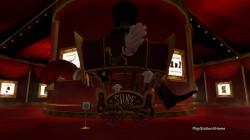
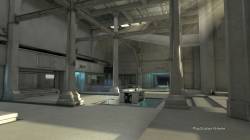
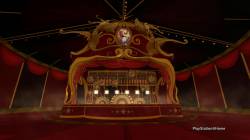
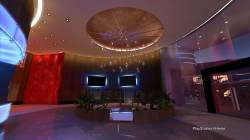
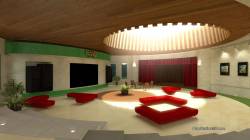
Great read Estim.
I miss the Warhawk space.
Excellent job Estim! I agree totally with your assessment of what these places need to perk up their numbers. When the AC2 space came out you couldn’t get into it because it was so busy all of the time. Now unless you are playing the tower game there, it is empty.
The developers who created them have either lost interest in Home and are simply waiting for the contract with Sony to expire so they can get out of town, or they don’t think it is worth the reinvestment to upgrade them. The economy itself may be dictating their actions as well.
Good read as always!
two of the four spaces Estim looked at are Sony spaces. Home is in REAL trouble if they lost interest with themselves. lol.
Thanks, Burbie!
Most companies seem content on keeping updates minimal at best, if any happen at all. Lockwood and nDreams are Home’s best advocates, what with Sodium, Xi and a milieu of avatar items and spaces, but almost everyone else aren’t providing as much as these two.
I’ll agree with Gideon that we don’t need a Home built entirely out of Lockwoods and nDreams -- their skills are so exceptional because they go above and beyond, not because they are the norm -- but we could use a bit more involvement from at least certain other players. I’d love to see Final Fantasy 7 outfits, for example. And I hope Square-Enix is reading this; I want my Tifa costume, dang it. lol
Oh and I totally forgot LOOT. Geez, that’s bad. lol So yeah, Lockwood, LOOT and nDreams are the Power Trio of Home.
While I understand the need for some spaces to have consistent updates, I dont really get what the big deal is about just having spaces that arent as active as other spaces. I guarantee there are groups of individuals who use these spaces as they hang out with their friends. Just because every single inch of Home isn’t busting at the seams with throngs of avis doesn’t mean a space isn’t serving its purpose or needs to be updated. Unless a developer wants to be an actively consistent part of Home we are just not going to get those sorts of spaces.
I for one LOVE having some spaces that aren’t jam packed with avis. Keep them as they are…. It keeps out those who are only in Home for quick satisfaction because that type of player always seeks out the new and shiny.
Thanks for the comment, Gid!
I agree wholeheartedly that a space needn’t be congested by avi traffic to justify its existence, fulfill a purpose and so on. If nothing else, they affirm Home’s social aspects, which we need to strengthen. I, for example, love the ambiance of the Hot Shots Golf Lounge; the gold statue is almost a bit creepy in retrospect (IT STARES INTO MY SOUL) but it has its charm.
It isn’t that fact in and of itself that I meant to highlight. I think some spaces might benefit from an update or two, though -- in particular Slap Happy Sam’s Stage Show. I also intended this to be a means of showing these spaces and remind people the exist, though that’s a minor point.
This article thus serves more as an explanatory vignette, with the occasional suggestions to increase traffic, not to mention show a partial cross section of the ‘forgotten realm.’ I’m not particularly suggesting updates are entirely needed, especially not right this second. With that said, the two spaces mentioned that could benefit the most from updates, to me, are Buzz! HQ and Slap Happy Sam’s.
Buzz! HQ is mostly due to the concept behind it, as mentioned in the article. Slap Happy Sam’s Stage Show is quite a different beast entirely. It’s the brainchild of The Odd Gentlemen and, if what I’m reading is correct, it’s the second game they created. Ever. They’re making money off of this venture directly from Home and they don’t have the guaranteed best-sellers that Capcom or Lockwood possess, so more’s at stake.
What makes Slap Happy Sam stand out as in desperate need of updates is that we (inevitably?) compare it to games that have -- and games that haven’t (Dragon’s Green, for example), which generally don’t see repeat plays. I wonder how many people, especially newbies, are even aware of Dragon’s Green and Slap Happy Sam these days, which would undeniably influence how many sales they’re getting (though neither breached the top ten, that’s for sure).
So for at least Slap Happy, I think it needs to remodel. It could use a new paint job and, more importantly, more games to help it compete with the Midway, a space (or spaces, rather) it may stand the best chance of following. If it follows suit, it may very well generate a lot of repeat customers.
As for the others, I’ll admit to a bit of nostalgic wanderings with them. lol I think they really could use more awareness and I even pointed out that Hot Shots Golf doesn’t really need any more interaction. All it needs is more people willing to visit it and it can be an effective lounge.
It’s interesting to note that in the case of the Assassin’s Creed space, it was created by Cornerstone, which is a branch of Lockwood’s parent company, Outso (they have designed other spaces as well, but I’d have to go back and read Issue 2 to to recall them).
That’s one of the real challenges -- when a big-name game developer contracts out the work for a space in Home, it may be a faithful and beautifully rendered recreation of a space in the game, but because the original developer themselves have no vested interest or time dedicated to the space (and neither does the contractor, once they fill their end of the deal), there is the perception that there is no need to keep the space “fresh.” At least, not until the sequel comes out (if that).
For me Hot Shots is a place I hang out and do work, so is the Hudson theater. They are quiet and the music isn’t to bad to work by. I use the Prius space as a gathering for the AvatardProductions meeting place..I haven’t been to The Lab since I got the TV..only reason I was there in the first place..That game isn’t for me..I stunk at South Parks tower defense game too…I would figure if the Home management saw such a decrease in visitors to that space..they would remove it. I miss CP!!! I like the HUB for what it is, but CP had a vibe that can’t be replaced. In my opinion-“Eat more bacon and pie!”
t is a sad fact that some of us users only visit these spaces for the free items…Never to visit them again afterwards…I am one of those people…However I find myself drawn to these places simply for the simple fact that I enjoy the serenity offered by such quietness…great read